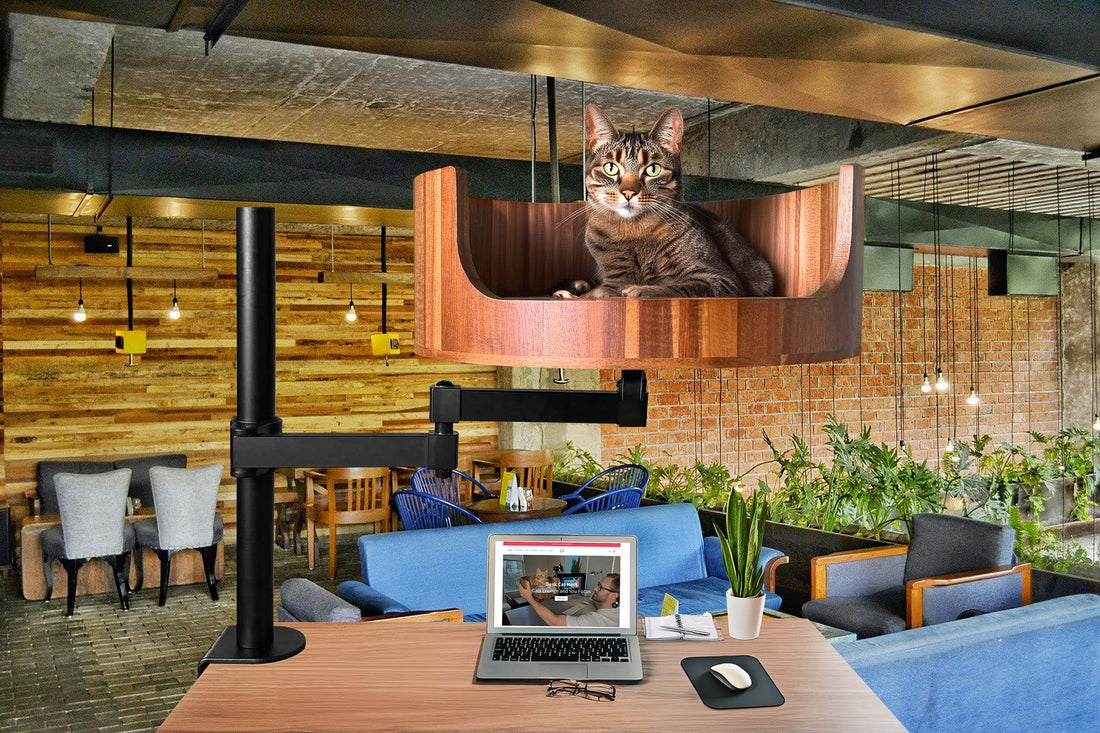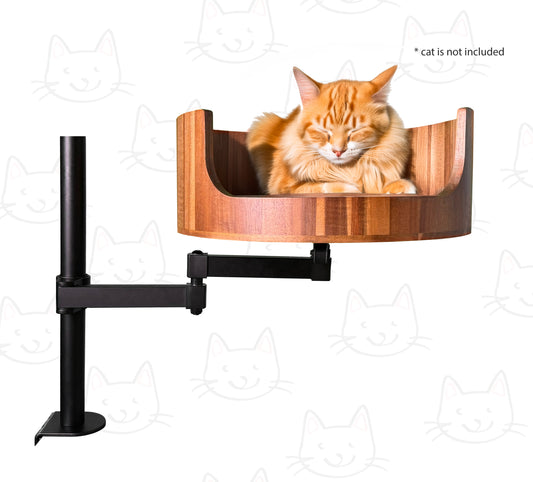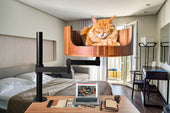
My Is My Cat Throwing Up: Understanding the Causes
Share
If you have ever experienced the unpleasant sight of your cat throwing up, you know how concerning it can be. From hairballs to underlying health issues, there are several reasons why cats vomit. In this article, we will explore the various causes of vomiting in cats and provide insights into when you should be concerned about your feline friend's health.
One common reason for cats throwing up is hairballs. Cats groom themselves by licking their fur, which can lead to the ingestion of loose hairs. These hairs can accumulate in their stomach and be vomited up in the form of a hairball. While occasional hairballs are normal, frequent or excessive vomiting could indicate a larger issue such as a gastrointestinal blockage or underlying medical condition. It's important to monitor your cat's vomiting habits and consult with a veterinarian if you notice any alarming symptoms. Additionally, diet plays a crucial role in maintaining your cat's digestive health. Certain foods or sudden dietary changes can trigger vomiting in cats, so it's essential to provide a balanced and appropriate diet for your feline companion. By understanding the potential causes of your cat's vomiting, you can better care for their health and well-being.
1. Cat vomit can be caused by a variety of factors, including hairballs, dietary issues, infections, or underlying health conditions.
2. Regular grooming and feeding a balanced diet can help prevent hairballs and digestive issues that lead to vomiting.
3. If vomiting persists or is accompanied by other symptoms, it is important to consult a veterinarian for proper diagnosis and treatment.
4. Monitoring your cat's behavior, eating habits, and overall health can provide important clues to the underlying cause of their vomiting.
5. Understanding and addressing the causes of your cat's vomiting is essential for their health and well-being.
Common Causes of Cat Vomiting
When a cat consistently vomits, it may indicate an underlying health issue. Common causes of cat vomiting include hairballs, dietary indiscretion, parasites, kidney disease, pancreatitis, and foreign objects ingested by the cat. Hairballs are common in cats, especially those that groom themselves excessively. If a cat ingests too much hair, it can accumulate in their stomach and cause them to vomit. Dietary issues, such as eating spoiled food or consuming something toxic, can also lead to vomiting in cats. Parasites, such as roundworms or hookworms, can irritate the stomach lining and cause vomiting. Kidney disease and pancreatitis are serious health conditions that can manifest as vomiting in cats. Lastly, if a cat ingests a foreign object, such as a toy or string, it can cause irritation and obstruction in the digestive tract, leading to vomiting.
When to Seek Veterinary Care
If your cat vomits occasionally and seems otherwise healthy, it may not be a cause for concern. However, if your cat vomits frequently, has other symptoms such as diarrhea or lethargy, or if the vomit contains blood or foreign objects, it is important to seek veterinary care. Chronic vomiting can lead to dehydration and weight loss in cats, so it is important to address the underlying cause promptly. Your veterinarian may perform a physical exam, blood tests, x-rays, or an ultrasound to determine the cause of your cat's vomiting. Treatment will depend on the underlying cause, but may include medication, dietary changes, or surgery in severe cases.
Preventing Cat Vomiting
To help prevent cat vomiting, ensure your cat has a balanced diet that is appropriate for their age and health status. Avoid giving your cat access to toxic substances, such as household cleaning products or human medications. Provide regular grooming to help reduce the risk of hairballs in cats. Encourage your cat to stay hydrated by providing fresh water and wet food, as dehydration can exacerbate vomiting. Monitor your cat's behavior and appetite closely, and seek veterinary care if you notice any changes that may indicate an underlying health issue. By taking proactive steps to prevent cat vomiting, you can help keep your furry friend happy and healthy.
## FAQ
### Will the Desk Cat Nest help with my cat throwing up?
While the Desk Cat Nest provides a cozy and safe space for your cat, it is not a direct solution for cat throwing up. However, creating a comfortable environment for your cat may help reduce stress and anxiety which can sometimes lead to digestive issues.
### Can the Desk Cat Nest be easily cleaned if my cat throws up in it?
Yes, the Desk Cat Nest is designed with removable and machine washable cushions, making it easy to clean in case of any accidents like your cat throwing up.
### Will my cat be able to access the Desk Cat Nest easily?
The Desk Cat Nest is designed with low walls and easy access points, making it simple for your cat to enter and exit the nest as needed. However, every cat is unique, so it may take some time for your cat to get used to the new space.
### Can the Desk Cat Nest be placed in any room of the house?
Yes, the Desk Cat Nest is versatile and can be placed in any room where your cat feels comfortable. Just make sure to choose a location where your cat will not be disturbed or stressed, which could potentially lead to throwing up.
In conclusion, choosing a Desk Cat Bed can greatly benefit your cat if they are throwing up frequently. The raised design of the bed helps prevent indigestion by promoting proper digestion and reducing the likelihood of regurgitation. Additionally, the comfortable and cozy design of the bed can help reduce stress and anxiety in your cat, which can also contribute to vomiting. Investing in a Desk Cat Bed is a valuable choice for pet owners looking to improve their cat's overall well-being and reduce the occurrence of vomiting episodes.



















































